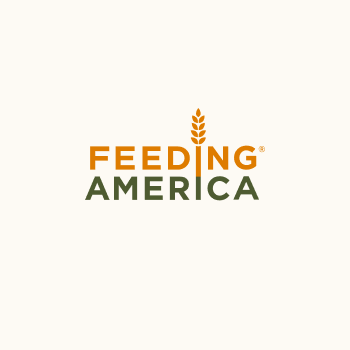Fighting food waste and hunger through food rescue
Imagine a world where everyone has enough to eat, and we make the most of our resources.
The Feeding America network makes this vision a reality by rescuing food. We've saved 4 billion pounds of food from waste. We've helped feed millions of our neighbors experiencing food insecurity. And this is just the start.



The problem of food waste
Food waste is an urgent global crisis. People and companies throw away billions of pounds of edible food every year. This not only strains our environment but also deepens food insecurity. The statistics are staggering:
38%
of all food goes unsold or uneaten.
92B
pounds of food go to waste each year.
145B
meals' worth of food goes to landfills.
51.7%
of waste comes from the food industry.
How food rescue works
Food rescue is a powerful solution to this complex problem. We can reduce hunger and help the environment. Food rescue sends surplus food from farms, stores, and restaurants to food banks.
Our team works closely with food donors to intercept food before it goes to landfills.
The Feeding America network of food banks and meal programs pick up the donated food.
Our members carefully inspect the food to make sure it’s fresh and ready to enjoy.
The rescued food reaches people experiencing food insecurity.
What is food waste?
Food waste is perfectly good, safe-to-eat food that gets thrown away instead of eaten. It happens at home, in stores, restaurants, and farms. Food gets wasted because of things like:
- Ugly or oddly shaped fruits and veggies
- Upcoming sell-by or expiration dates (food is often still safe to eat)
- Overproduction at farms
- Food getting damaged during transport

The environmental impact
Food waste is a major contributor to climate change. It's responsible for 8% of all global carbon emissions, making up most items in our landfills. Growing food requires lots of water, fuel, and fertilizer.
By preventing food waste and rescuing food at risk of being discarded, we can lessen our environmental impact and ensure that resources are used to nourish communities.

Fuel the fight against food waste!
Join us in our mission to rescue 5 billion pounds of food this year! Contributions to the Food Rescue Fund help keep good food in our community and out of landfills.

Benefits of food rescue
By supporting food rescue, you’re helping us create a future where no one experiences food insecurity and good food never goes to waste.

Less waste, more food
We keep good food out of landfills and give our neighbors nourishing meals.

Nourishes communities
We provide fresh fruits, veggies, and food to people visiting food pantries and meal programs.

Stronger food system
We create a more efficient way to get food from farms and stores to families.
Join the movement!
Help us end hunger and stop food waste. Here's how you can get involved:

Donate
Your support helps us rescue even more food.

Volunteer
Sort, pack, or even glean food from farms.

Reduce your food waste
Plan meals, store food properly, and get creative with leftovers.

Involve your company
Partner with Feeding America to start a food rescue program.
Explore more about food rescue
Check out food rescue stories and learn how you can help reduce food waste.



























